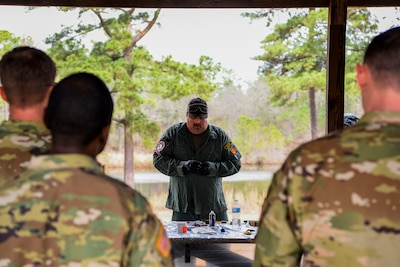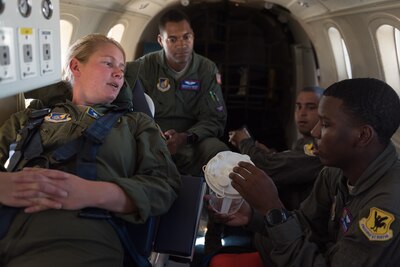By Lisa Ferdinando DoD News, Defense Media Activity
ARLINGTON, Va., Feb. 28, 2018 — Adversaries are evolving,
and the United States needs to stay ahead of these threats to ensure it never
enters a “fair fight,” the commander of U.S. Strategic Command said here today.
Air Force Gen. John E. Hyten said the top priority of his
command is deterring the use of nuclear weapons, preventing the use of those
weapons against the United States and its allies, and preventing a catastrophic
space or cyberspace activity.
In a keynote address at the Association of the United States
Army’s discussion on Army air and missile defense, Hyten commended the men and
women of Stratcom who serve every day to defend the nation against threats.
“Our first priority: above all else, we will provide a
strategic deterrent,” Hyten said. “If you are in a command that has all the
global nuclear capabilities of our nation, that better be priority No. 1. But
that is not the only thing that provides our strategic deterrent.”
If deterrence fails, the general said, Stratcom will provide
“a decisive response -- and decisive in every way that word can mean.” That, he
added, will be accomplished with a “combat-ready force trained, equipped and
resilient to any threat that they face.”
He highlighted the elements of deterrence as “the ability to
deny benefit to an adversary, impose cost on an adversary, and communicate that
credibly to the adversary.”
NPR: Dealing With Threat-Based Problem
Hyten said the recently released Nuclear Posture Review
addresses the nuclear threat “exactly right.” The general, who had a
significant part in writing the document, said the posture is threat-based
planning and threat-based answers to a threat-based problem.
“It has very specific recommendations based on the threat,”
he said. “As a combatant commander, I can't look at the world the way I wish it
was. I have to look at the world the way it is and deal with that threat that
is out there, and the Nuclear Posture Review does just that.”
Adversaries Are Watching
Hyten said adversaries of the United States have been
watching and are increasing their capabilities.
“Today we are still the most powerful, dominant military
force on the planet, and there is no doubt that in any conflict today we would
be superior in that conflict,” Hyten said. “But everybody in this room should
be worried about 10 years from now. Will we still be in that place?”
He recommended finding ways to better integrate global
capabilities, and said missile defense priorities include improved sensors,
kill vehicles and capabilities. In addition, he called for speedier processes
related to the budget and integrating new weapons systems.
“We take forever to do anything anymore -- and our
adversaries are not suffering the same problem,” he said. He warned that if the
nation fails to figure out “how to go fast again,” the adversaries will catch
up.
“We should never get into a place where we're in an even
fight, we're in a fair fight,” he said. “We should always be in a dominant
position, because that allows us and our nation to reach out to our allies and
do the things that we need to do in this world.”








